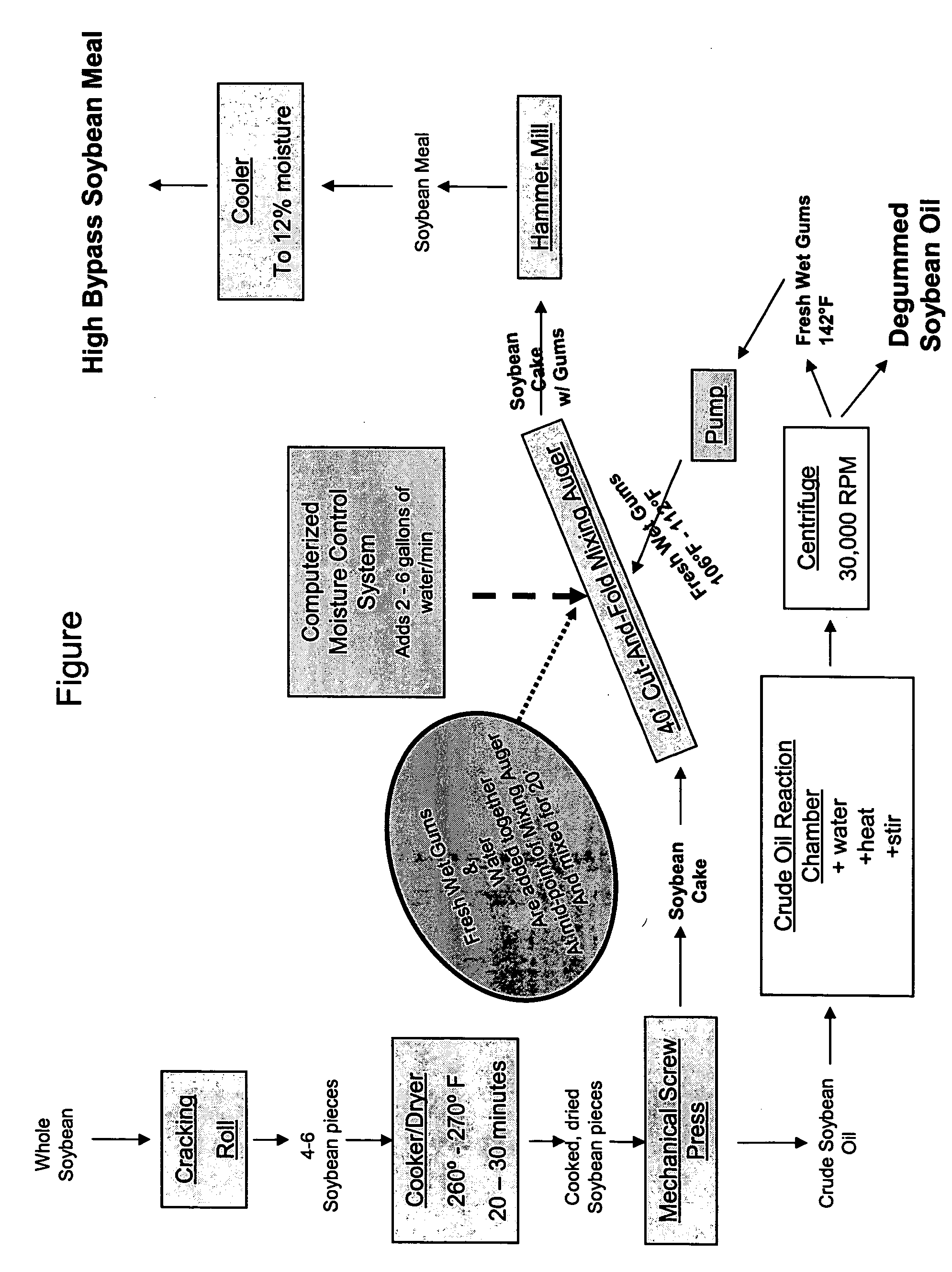Method for manufacturing animal feed, method for increasing the rumen bypass capability of an animal feedstuff and animal feed
a technology of animal feed and bypass capability, applied in the field of animal feed and a process for making animal feed, can solve the problems of not revealing the increase of rumen bypass of protein, disadvantageous coating ruminant nutrients, and public perception of formaldehyde in animal diets, so as to improve the bypass nature of particles, reduce the amount of destruction, and increase the effect of milk protein
- Summary
- Abstract
- Description
- Claims
- Application Information
AI Technical Summary
Benefits of technology
Problems solved by technology
Method used
Image
Examples
examples
Feed Sample 1
[0087] Feed Sample 1 was a soybean feed sample of the present invention. Feed Sample 1 was ground to provide a better surface area for phospholipid extraction. The ground sample was sent to Avanti Polar Lipids, Inc., Analytical Services Division, Alabaster, Ala., for analysis of phospholipids by HPLC. Approximately 20.6 grams of the ground Soybean Meal were suspended in 100 ml of 10% NaCl in water and emulsified. The emulsion was extracted with 150 ml of 1.1 (v / v) chloroform:methanol and centrifuged. The lower chloroform layer was removed to a separate 250 ml volumetric flask. The remaining methanol:water layer was extracted twice with 50 ml of chloroform and combined with the initial extract. The chloroform extract solution was brought to volume with additional 1.1 (v / v) chloroform:methanol. HPLC was performed by a normal phase gradient utilizing a mixture of authentic soy phospholipid standards.
[0088] The standard mixture contained phosphatidylinositol (PI), phosph...
PUM
 Login to View More
Login to View More Abstract
Description
Claims
Application Information
 Login to View More
Login to View More - R&D
- Intellectual Property
- Life Sciences
- Materials
- Tech Scout
- Unparalleled Data Quality
- Higher Quality Content
- 60% Fewer Hallucinations
Browse by: Latest US Patents, China's latest patents, Technical Efficacy Thesaurus, Application Domain, Technology Topic, Popular Technical Reports.
© 2025 PatSnap. All rights reserved.Legal|Privacy policy|Modern Slavery Act Transparency Statement|Sitemap|About US| Contact US: help@patsnap.com

